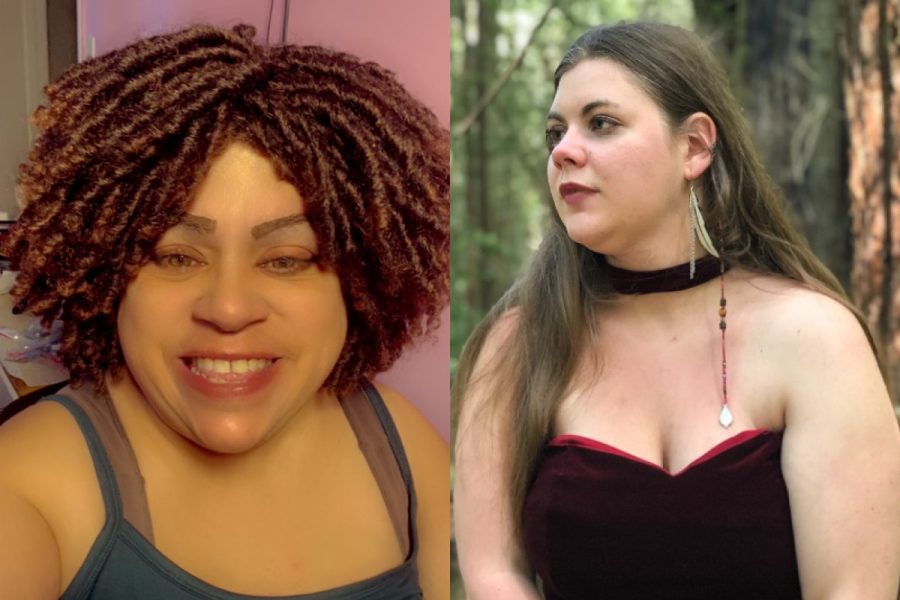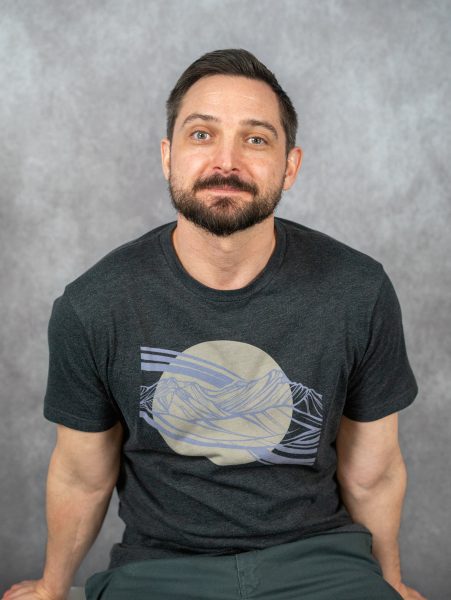Santa Rosa Junior College students Delashay Carmona Benson and Athena Weathers recently formed a disabled students union, which will become official in Fall 2022, to bolster the disabled community on campus.
Both Benson, outgoing Student Government Assembly president, and Weathers, SGA vice president of diversity, are disabled and first thought of starting DSU during Fall 2021 while relating to one another about the challenges they faced on campus.
Benson said her initial experiences were cold and humiliating.
“When I first joined SRJC, I was in an electric wheelchair, and I couldn’t get into Newman Auditorium because there was no accessibility for me. I had to sit there and wait until some student would be nice enough to open the front door,” she said. “Then you have that big wooden door that sounds like an earthquake when you close it, and you don’t have anyone to help.”
Even though SRJC has improved physical accessibility and classroom support for disabled students through the Disabilities Resources Department, many disabled students still feel isolated from campus life, according to Benson. She said the DSU can provide the social support for disabled students that SRJC lacks.
“We want our experience at SRJC to be equal to what other students have. We don’t just want extra help. We want to feel included in everything,” Benson said.
She said a DSU will help promote disability as a cultural identity, which encourages students and faculty to think about the needs of disabled students when they prepare campus events.
For example, American Sign Language students need to request an interpreter for events three to four days in advance, which doesn’t help if they see the flier for the event too late.
Increased awareness of disability culture will not only lead to increased acceptance of disabled students on campus but in the classroom as well, Benson said. After she no longer needed a wheelchair, some instructors were reluctant to provide her with DRD support because her disabilities weren’t visible.
“Not just our faculty, but most people think a disabled person has to be in a wheelchair or speaking irregularly,” she said, “so when they see you can walk and talk, they don’t take it seriously that you’re disabled.”
Benson said even though DSU’s goal is to build a disabled community on campus, everyone is welcome to support the club.
“We are addressing decades long disability discrimination culture that’s on the JC campus. We want to make sure everyone is welcome, because we need everyone,” Benson said.
Weathers said the future DSU will help disabled students possess the self-confidence she didn’t have when she started at SRJC.
“Honestly, at first I was scared to go to the DRD and have that label on me. And I think a lot of students who apply for DRD don’t follow through,” she said.
Many disabled students feel shame, Weathers said, because the stigma that they are unattractive and unwanted in our society has persisted for so long. She said the previous DRD offices were in Analy Village’s portable buildings, in the back of campus.
“It’s like saying we don’t want you in our limelight, like SRJC is ashamed of us,” Weathers said.
Now DRD offices are on the third floor of the Bertolini Student Center, but Weathers said the only wheelchair access is a “rickety old elevator” that is hard to find according to Weathers.
Weathers wants to model the DSU after the Black Student Union, another group that gives voice to oppressed and excluded students.
“We want to give students pride in being disabled and neurodivergent and allow them to have a voice in decisions the student body makes,” Weathers said.
Like those who fought for civil rights based on race, disabled people have been fighting for decades and making slow gains, Weathers said. In 1975 and 1990, the U.S. passed the Americans with Disabilities Acts to ensure that people with disabilities weren’t discriminated against and were given an equal opportunity for happiness.
SRJC Disability Resource Specialist Laura Aspinall thinks a DSU will help push SRJC curriculum toward a Universal Design for Learning, a framework based on the science of learning to optimize teaching and learning for all people.
“Now the shift is moving toward curricular access and how to mitigate those barriers to learning and get away from a one-size-fits-all thinking when it comes to education,” Aspinall said.
Aspinall said disability services have historically been “deficit based,” meaning they focus on the individual who needs extra accommodation as being the problem. But recently, there’s been a shift from this medical model of disability services to a socially focused model that faults the institution instead.
An example of making classrooms more accessible would be recording PowerPoint slides and encouraging students to share their notes so students with learning disabilities wouldn’t have to seek accommodations for a note taker, Aspinall said. This would also benefit students without learning disabilities who may not understand the course material as well as others.
She said making accommodations automatic would also free disabled students from having to seek accommodations for every class they are in each semester.
“There can be a lot of trauma with having to tell your story over and over again to prove your worthiness for something,” she said.
Aspinall said she’s talked to many instructors nervous about making their classrooms universally accessible.
“I’m quick to say I consider this a practice. Just like practicing piano or yoga, it’s not something you do perfectly. It’s a continual process of improvement and reflection,” Aspinall said.
Kim Starke, dean of disabled student programs and services, is the DSU advisor and hopes to use her 20 years of special education experience to guide the group in finding a home base and vision.
She said the DSU will encourage more students to use the DRD resources. Many students who encounter barriers to learning don’t use the DRD resources because they don’t see themselves as disabled, according to Starke.
“The word disability should not be stigmatizing,” Starke said. “It’s something that indicates that there’s a barrier that needs to be eliminated. The DSU can help increase awareness of what the DRD does: break down those barriers.”
Starke said many students have felt isolated during the pandemic, which can exacerbate anxiety and mental health issues. She said the DRD or DSU is a good start for them to find support.
SRJC Foundation Executive Director J. John Mullineaux said the foundation awarded $15,000 to DRD to help with student support programs. Benson said these funds should aid in the initial DSU development.





Mary Ellen Wells • May 18, 2022 at 7:57 pm
This is awesome! My son attends SRJC and has DRD services. He’s been looking for a community. Thank you for writing this article.